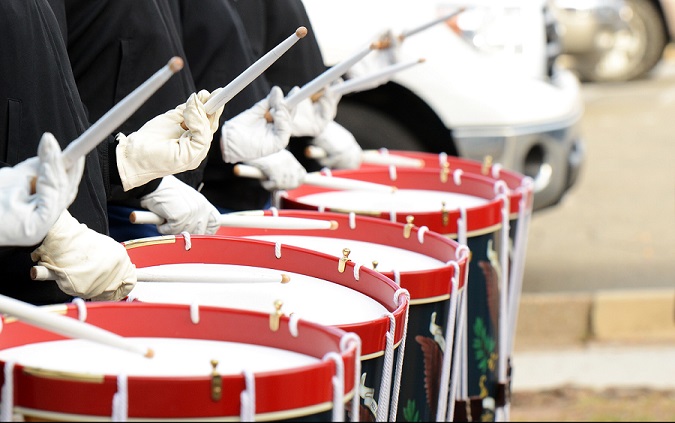
When you are learning any instrument, it can be a rather daunting prospect to juggle “correct” technique with a technique that works naturally for you. You'll find that the technique of the musicians you aspire to varies wildly from one to the next.
That being the case, how do you know which technique you should adopt? To answer this question, this article looks at some common drum stick grips, the pros and cons of each grip, and how each one compliments different styles of music and ways of playing.
Match vs. Traditional Grip
Match Grip
Broadly speaking, there are two main types of grip: match and traditional. Put simply, match grip is where the left and the right hand hold the sticks the same way, with the stick held between the thumb and the fingers.
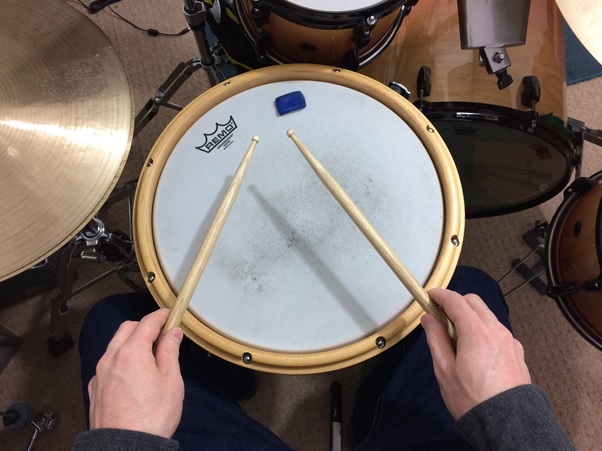
Traditional Grip
In contrast, traditional grip is where the weaker hand (left for right handed players and right for left handed players) holds the stick between the middle and third finger. This originates from the marching tradition. Drummers had to walk with their drums by their side, which meant it was uncomfortable to strike the drum head using match grip. Traditional grip allowed these early drummers to strike the drum head centrally without having to raise their arms uncomfortably.
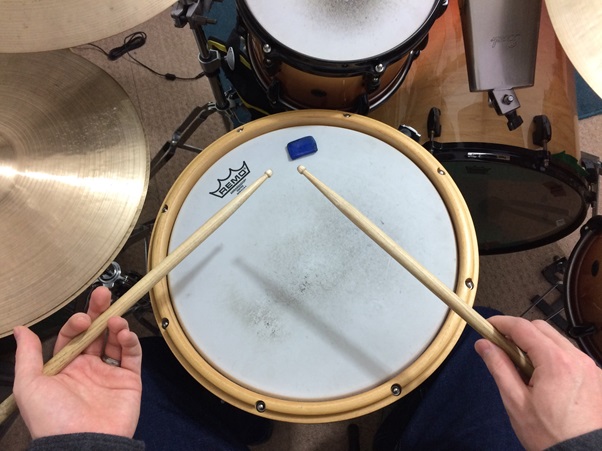
Comparison
Personally I play match grip, because:
- When I first picked up a pair of drumsticks, I did it this way.
- I was taught this way.
- Many of the drummers I respect play this way.
- To me it's easier to strengthen the weak hand when it's copying the strong hand.
In Jojo Mayer’s fantastic instructional film “Secret Weapons of the Modern Drummer”, he talks about the pros and cons of each grip. He also offer some reasons that people choose traditional grip over match grip:
- To honour tradition (when playing swing or marching music for example).
- If you were taught this way.
- To look more intelligent.
Obviously, some of these reasons are more legitimate than others, and it's ridiculous to play traditional grip just to look intelligent. Traditional grip takes longer to begin to use and the results won't necessarily be better than match grip, but don't let this put you off if you really think that using it will benefit you in the long run, for example, if you want to play early popular music or military music.
Essentially, the grip you choose should be chosen for the right reasons. You could also research the grip used by the drummers you aspire to. Think about the styles of music you want to play and find out which grip is more popular to the drummers of this style.
German, French, or American
Once you've chosen between match and traditional grip, you need to understand the differences between German, French, and American grips.
German Grip
German grip is the most powerful of the three. When playing match stick with German grip, the sticks should be at a 90 degree angle to each other. Rotate your wrist so your palms face towards the floor and use your wrist and forearm to generate the stick action. Your fingers should help the stick rebound from the drumhead or cymbal.
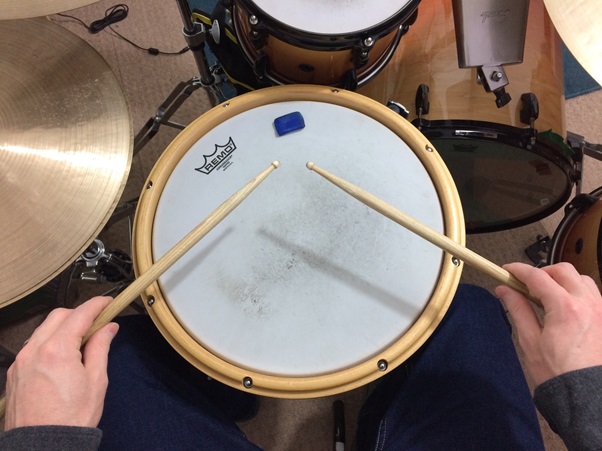
French Grip
French grip offers more finesse than German grip but sacrifices power. When playing match stick with French grip, the sticks should be almost parallel to each other. Turn the wrist so the hand is facing inwards, parallel to the floor, and generate the stick action by pulling the stick with your fingers. More power can be generated with the wrist and small movements of the forearm.
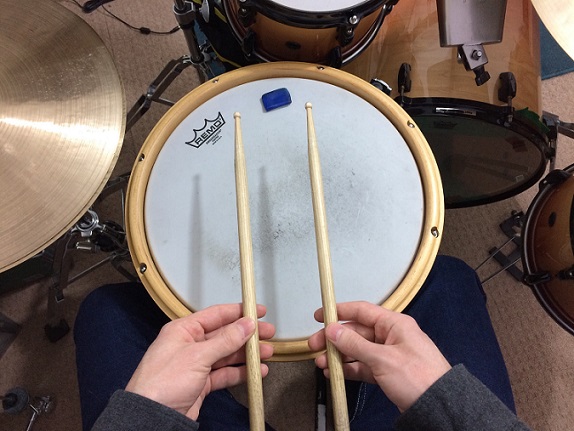
American Grip
American grip is a middle ground between German and French. When playing American grip, keep your sticks at a 45-60 degree angle to each other. This grip utilises the fingers, wrist, and arm in equal measure and is probably the easiest grip to begin to play.
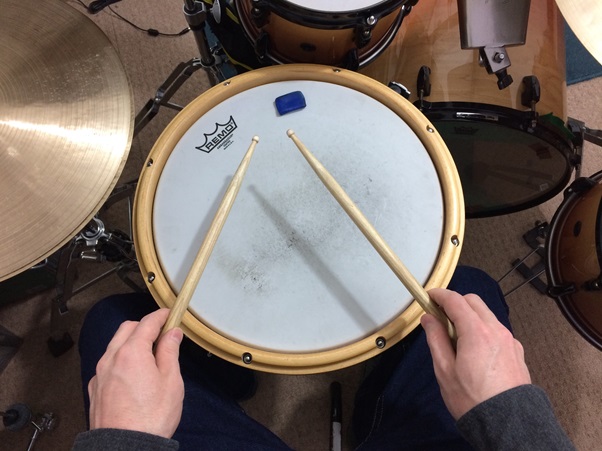
Choosing between these three grips isn't as black and white as choosing between match and traditional grips. I, for example, switch between these grips depending on:
- The style of music—if I'm playing heavy rock music, I'm more likely to play German, whereas if I'm playing background jazz, I'll be more inclined to play French.
- The part of the drum kit—if my right hand is playing the ride, I find it much easier to play French, as I can just rotate my wrist to reach around to my right. On the other hand, if I'm playing the hi hats, I'm more inclined to play German.
- The volume—if I'm playing a small venue and I need to have a light touch, I will probably play more French. If I have the freedom to play loudly, I will probably be more reliant on German.
You should ideally feel comfortable with all of these grips regardless of the music you're playing and where you're playing. Mastering all three grips will increase your technical capability and enable you to play pretty much anything.
Final Thoughts
You don't have to choose which grip you're going to use for the rest of your drumming life right now. Inevitably your interests and influences will change over time and so will the way you play. I know people who became interested in jazz and switched from match grip to traditional grip after playing the former for 10 years or more.
There is no right or wrong grip, they all have strengths and weaknesses but, as a drummer, you'll be helping yourself out in the long run by knowing and understanding these strengths and weaknesses.
What is your favourite drum stick grip and why is it your favourite? Share your thoughts with us in the comments section below. Also, check out our previous article on drumming right here, A Beginner's Guide to Acoustic Drums.
Ready to pick up the drums?
Start learning with our 30-day free trial! Try our drums courses!About Liberty Park Music
LPM is an online music school. We teach a variety of instruments and styles, including classical and jazz guitar, piano, drums, and music theory. We offer high-quality music lessons designed by accredited teachers from around the world. Our growing database of over 350 lessons come with many features—self-assessments, live chats, quizzes etc. Learn music with LPM, anytime, anywhere!







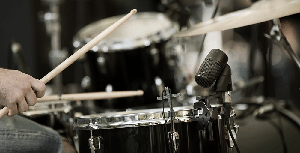



Hi There. This is definitely the best explanation of proper drumstick technique that I’ve read. With regards to matched grip, do you recommend a tight or loose grip? I ask referring to beginners as I was always taught to hold the sticks tightly and then loosen as I improve. However some teachers believe a looser grip from the outset is better. I’d love to hear your thoughts.
Thanks so much!
Hi Justin,
Thanks for your comment, that’s really kind.
So I personally like to play with a very loose grip as I feel it produces the biggest sound with minimal effort. I find that holding the sticks more tightly chokes the sound and also means that you’re relying more on your wrists, arms and shoulders to produce your stick action rather than your fingers and the stick itself. The stick is the most important component in producing a smooth action so I like to allow it to be as free as possible.
I understand your point about beginners using a tighter grip and loosening it over time, and I think that’s probably the best approach. Starting with a tighter grip, learning the basics of Moeller stroke, and then enhancing that stick action by loosening the grip seems like a wise idea.
Thanks again for getting in touch!
Brendan (Liberty Park Music)
Jojo Mayer is obviously an idiot. But, besides that, this is a great informative article. Thank you. Traditional grip takes just as long or short a time to learn and master as matched grip. It is best for handling fast and powerful lightning-speed strokes and accents and on drumheads and other surfaces and instruments of various angles and positions where a matched grip will not be as good, such as a multipercussionist drum set. Just because it was played on a marching snare once does not mean that that is all it’s good for. Try it. You’ll love it.
Thanks very much for your comment, it’s much appreciated. Firstly, I think Jojo Mayer is merely trying to make the point that there is no reason you should feel as though you have to play traditional grip, and I think he’s right. He sets out some reasons for and against using traditional grip but remember, he often plays with a traditional grip himself. I’m not suggesting that Jojo Mayer is the only authority who should be listened to regarding stick grips, his technique is unquestionably brilliant and regardless of what you think of him as a person there is definitely some value in watching his Secret Weapons DVD if you haven’t already.
I take your point on using traditional grip for certain setups to offer a different striking angle, and I think the history of the origins of traditional grip in marching bands is a good example of that. However I’m not sure I agree with you regarding traditional grip offering more powerful accents or greater speed. There’s no physiological reason for this to be the case. I have played traditional grip in the past and still do when playing with brushes (again going back to your point of the angle offered by traditional grip over matched) but for me matched grip has always felt more natural.
Again thanks for your comment!
An excellent articulation of the primary grip positions. I’ve been drumming for thirty-five years and have always, without variation, used German grip. My first instructor, a staunch enforcer of German grip, started me on a classic Remo practice pad, transitioning me a year later to a snare drum. We worked exclusively on rudiments (e.g., “Stick Control for the Snare Drummer”) for two years before I even sat behind a drum set. When I acquired my first kit, German grip was so engraved upon my muscle memory that departing from it was unthinkable. I am chiefly a backbeat drummer, so German grip has always suited my needs quite nicely, even when utilizing my ride cymbal. I’ll never visually adapt to the thumbs-up manner of French grip. It just looks wrong to my biased eyes, though I realize the benefits it provides in certain applications, particularly for the rapid ride-cymbal patterns jazz drummers frequently execute.
Thanks for the kind words Christopher!
Stick Control is an incredible book and it’s amazing that it’s just as valid now as it was when it was in 1935 when it was written! You make a good point regarding changing grips depending on which surface you’re playing. I’d never naturally revert to a French grip on the snare but quite often do so on the ride, primarily because it requires less movement of the arm.
Thanks again for getting in touch!